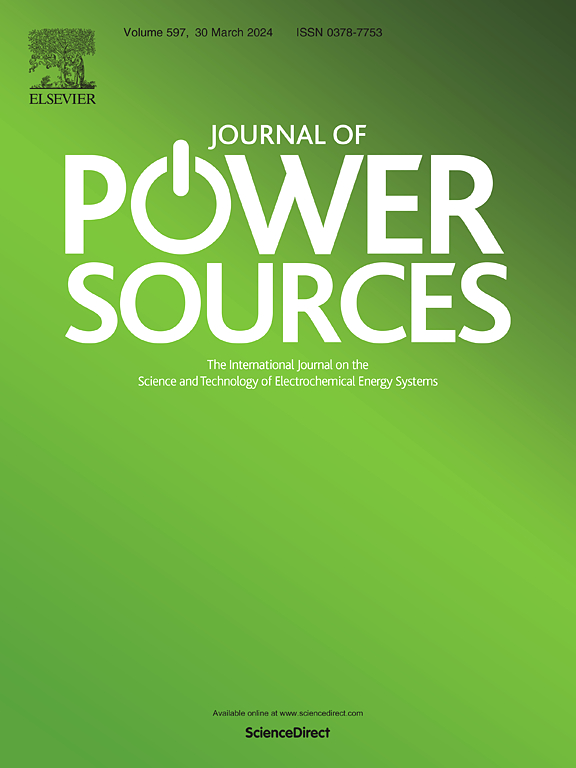Boosting hydrogen peroxide electro-generation by adjusting the wetting state of porous Janus electrode during oxygen reduction reaction
IF 8.1
2区 工程技术
Q1 CHEMISTRY, PHYSICAL
引用次数: 0
Abstract
This study aims to design a porous Janus polyacrylonitrile-based carbon fiber (PCF) electrode with asymmetric interfacial wettability for the simultaneous management on oxygen diffusion and ion transfer for H2O2 electro-generation. The wetting state of PCF electrode is adjusted by the facile deposition of polytetrafluoroethylene (PTFE) via capillarity. In contrast to single aerophobic and aerophilic electrodes, the Janus PCF electrodes provide a stable gas film for promoting oxygen transfer while ensuring rapid ion migration and release. Compared to the other Janus electrodes, the porous PCF electrode subjected to three cycles of PTFE modification (named Janus-3) exhibit richer functional groups that improves two-electron oxygen reduction reaction (2e−-ORR) performance with reduced onset potential and higher current increase rate. And the excellent characteristics of Janus-3 contribute to the highest H2O2 production rate of 10.61 ± 0.13 mg h−1 cm−2 in a flow-through electrochemical system, along with the highest current efficiency (CE) and oxygen utilization efficiency (OUE) values of 83.63 ± 1.01 % and 81.22 ± 4.13 %, respectively. The oxygen mass transfer and ion transport mechanism of H2O2 electro-generation are revealed. Lastly, long-lasting operation stability of Janus-3 and its high H2O2 production, CE, and OUE suggest great potential to replace normal gas diffusion electrodes for H2O2 electro-generation.

求助全文
约1分钟内获得全文
求助全文
来源期刊

Journal of Power Sources
工程技术-电化学
CiteScore
16.40
自引率
6.50%
发文量
1249
审稿时长
36 days
期刊介绍:
The Journal of Power Sources is a publication catering to researchers and technologists interested in various aspects of the science, technology, and applications of electrochemical power sources. It covers original research and reviews on primary and secondary batteries, fuel cells, supercapacitors, and photo-electrochemical cells.
Topics considered include the research, development and applications of nanomaterials and novel componentry for these devices. Examples of applications of these electrochemical power sources include:
• Portable electronics
• Electric and Hybrid Electric Vehicles
• Uninterruptible Power Supply (UPS) systems
• Storage of renewable energy
• Satellites and deep space probes
• Boats and ships, drones and aircrafts
• Wearable energy storage systems
 求助内容:
求助内容: 应助结果提醒方式:
应助结果提醒方式:


